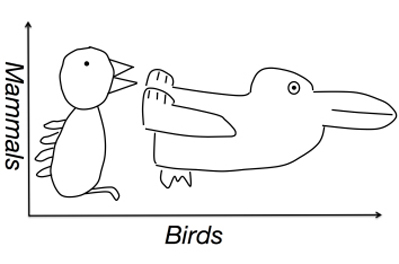|
The Integram:
an Integral Enneagram of Consciousness; a model of consciousness,
including all aspects, for designing practical paths of personal
development and evolution.
Quick Links: jump
to any section
Feature Article
No time?
Listen
to the
podcast
(8:19
min.)
in the background while you file, exercise, ride to work, etc.
Listen on
Soundcloud
Quick Communication Tip
Special Offers
Resource
Links
****************
Subtext: Friend or Foe
(click for
podcast version)
The
Space Between
Implicit Confusion / Explicit Clarification explored the pitfalls of
not fully and clearly expressing something; leaving nothing to
interpret. We looked at this from the speaker’s perspective, in terms of
being explicit and not implying what needs to be stated clearly.
Implications are fraught with interpretation, and interpretation is
fraught with our own worldviews and baggage.
Looking at this issue from the perspective of the listener we may have
far more power to keep the communication on track. Another, more common
name for implicit meaning is subtext. Subtext does exist. We can’t
totally ignore its existence, and yet this is an area that creates
enormous confusion and conflict. We know subtext is there, we feel a
need to fill it in, and this is the allure of assumptions.
Of the
“Three
Strikes of Communication,”
Assumption is strike number one for a reason. It seems we get most of
our daily aerobic exercise jumping to conclusions. The conclusions
follow premises we often create in the space between the lines. These
are the sneaky assumptions; the ones that feel like educated guesses.
The education in this case is our general life experience. So assumption
number one is that we can adapt general life experience to a specific
situation with accuracy.

This follows quickly with projections as strike two, as we put ourselves
in the place of the person speaking or writing. Again, this is a very
common thing to do, as we are trying to “relate.” I’ve often referred to
this as the “if it were me saying or doing this, it would mean X”
projection. If we plug that projection in as factual, we invent a
subtext that is most likely inaccurate. If we continue to build on these
assumptions and projections, filling in what we think the person meant
or felt, we get further and further from the truth, and we end up
changing their meanings quite a bit.
Let’s look at a simple example. Someone says, “when I walked into the
room, 10 people walked out.” Listener number one is a very “pull
yourself up by your bootstraps” kind of guy and fills in the subtext:
“what a whiney victim,” and proceeds to color the rest of the speaker’s
words as coming from that perspective. Listener number two is shy and
easily intimidated and fills in the subtext: “he’s trying to scare me,
saying he scared those others out of the room.” Listener two now colors
the speaker’s words as coming from a bullying perspective. Two people
created opposite subtexts from the same spoken words.

If a robot or a computer made this observation, we’d probably take it
very literally, and not add subtext. When it’s a person making the
observation, our busy little brains go to work asking and answering
questions internally, and filling in all the subtext. We miss an
enormous amount of actual communication this way. As listeners we have
the opportunity to push the speaker for explicitness. We can look at the
space between the lines, and not fill it in with assumptions or
projections. We can check in, ask questions, and get actual information.
Real Subtext
As I said earlier,
subtext does exist, and it can add another dimension of richness to
communication. The trick is having accurate subtext. The only way to
ensure this is looking at how you obtained the subtext. Obviously
assumptions and projections don’t work. Checking in and getting explicit
information is definitely accurate, but that’s not subtext. Subtext
works a lot like context in terms of giving “meaning” to our
communication. It becomes the canvas under the painting.
In
an old article called
“What
Did You Say?” I talked about the differences between: “Can I help
you?” [subtext: open question] “How can I help you?” [subtext: I can,
but need to know how] and “What can I do to help you?” [subtext: I’d
like to take an action to help you]. The differences indicate real
subtext, and yet checking in still beats betting the farm on our
assumptions.
The more we understand the dynamics between people, the more we have a
tiny chance of getting subtext accurately. Is it about mirroring a trait
we see in ourselves? Is it fulfilling a fear? Is it the childlike
defense of a pre-emptive strike? When person A works really hard to keep
her life organized, and person B doesn’t, their communication will be
filled with subtext. When person C wants commitment from person D, a
second of hesitation becomes subtext. Until we know these people we
won’t know what that subtext is. Completely opposite interpretations are
possible, as are a thousand in between.

This is why subtext is generally best used in literary and theatrical
works. We want to suspend meaning and offer the audience ambiguous
possibilities. In real life, this level of “drama” is a major obstacle
to clean, accurate communication. We need to remember to draw the line
between entertainment and real life communication. Drama doesn’t assist
our relationships at home or at work, and often adds gasoline to the
smallest flame. Being as literal and accurate as possible, and checking
in along the way keeps our communication clean and keeps us out of the
drama zone. It just takes that little extra bit of mindfulness and
consciousness.
Want to learn more about how to become the best you possible?
Come visit the
web site,
or better yet,
contact me
and see how we can design a program
to fit your needs and desired outcomes.
- Ian J. Blei
****************
Quick Communication Tip
Let
There Be Space
If you read between the lines,
you’re not reading the lines. Between the lines there’s blank space.
That blank space can be anything to anyone. This was a popular subject
for artists during the 1960’s. A big blue box. What does it mean? It’s
open to your interpretation. It can mean anything.
That is exactly the opposite of our purpose in communication. We are
attempting to communicate something very specific. The more
interpretation involved, the less we’ve successfully communicated. When
there is space between the lines, let there be space. It is there to
give you breathing room. It is the rest in the music. It is an
opportunity to check in.
Want to learn more about how your communication can hold you back or
catapult you forward? Come visit the
web site,
or better yet,
contact me and see how we can design a program to fit your needs and desired outcomes.
****************
April
Special Offer!
Everything's
Free!!!
April Fools - but close!!!
Dynamic Discovery Session
on Sale
thru the end of April!
[CLICK
HERE FOR DETAILS]
"...Ian
has changed my life in so many ways and in all aspects. I have learned
so much about myself, and grown into someone I never thought
possible. This has translated into my work life, social life, love life,
etc. Thank you Ian Blei!
--J. G., Personal
Trainer - S.F., CA
Click to Schedule.
****************
Resource Links:
The Integram Archive
- the podcast series
Melissa Risdon's Raving Fan Radio Show:
Ian Blei on the
Integram
(TM)
-understanding
ourselves, each other, and our relationships
KG Stiles: "Conversations that Enlighten and Heal"
Ian Blei on Kind Ambition and the
Integram
(TM)
Kind
Ambition
-
2nd Edition
Got Blog?
come
visit the Blog.
****************
|
Welcome to the Integram, where consciousness meets
intentional design. Enjoy!

The Optimizer
Ian Blei,
Director of the
Institute for Integral Enneagram
Studies
and
President of
Optimized Results
415.826.0478
Kind Ambition
Click
HERE
Kind Ambition:
Practical Steps
to Achieve Success
Without Losing Your Soul
Kind Ambition
Fan Page
now on
FACEBOOK
Kind Ambition
is
about you having the tools to slide over to the driver’s seat of your
own life. Circumstances will always be changing, seemingly
thwarting our plans, but we don’t have to be thrown around by them. You
can be in charge of your choices and actions more than you might imagine
- yet.
Kind Ambition
is written for you, as
a practical guide you can use right now. It is a collection of
insights and actions designed to help you move forward and get more out
of your life at home and at work. The chapters hold to a formula
of first giving you a new way to look at things, then offering you
tangible Action Steps to try them out, and finally some things to notice
when you do.
Kind words for “Kind Ambition”
"If you are interested in success, whether it is in
running a large organization, a small business, or leading a satisfying
life, you will find a right blend of rules, wisdom and wit in a
digestible fashion that will serve to accomplish your objectives. The
notion that kindness can be blended with ambition and made to work and
serve the "bottom line" is enlightening, uplifting and satisfying."
-Steven Kiefel – CEO, Red Pill Media
“An easy to use guide for anyone who wants to achieve
real growth and success. His sensible and practical tactics solve
age-old challenges with real, how-to solutions. Best of all, Ian lives
his work!”
-Romanus Wolter - Author: Kick Start Your
Dream Business
Success Coach Columnist: Entrepreneur Magazine
Radio Host: Syndicated Kick Start Guy Segment
" We all face obstacles in our lives and careers. Some of
these come from within, subverting our conscious intentions. The good
news is: they can be overcome. The techniques and processes found
in this book will help you on your way."
-Margaret Heffernan – Author: The Naked Truth: A Working Woman's
Manifesto on Business and What Really Matters
Syndicated Columnist: Fast
Company Magazine
“A
scientifically-based, spiritually-awake, (and smart and funny) guide to
making the most of your life. Ian Blei provides the know-how, the
inspiration, the structure and all the tools you need in this
straightforward and inspirational book.”
-Lisa Betts-LaCroix, Past President of SF Coaches
Star
of Unapix film, “Dance Me Outside”
" Ian Blei shares his deep insights in simple and
straightforward ways. His work continues to inspire me whenever I
feel I'm getting stuck in some area of my life."
-Roy King, III
, Director Pacific
Development Partners
|

